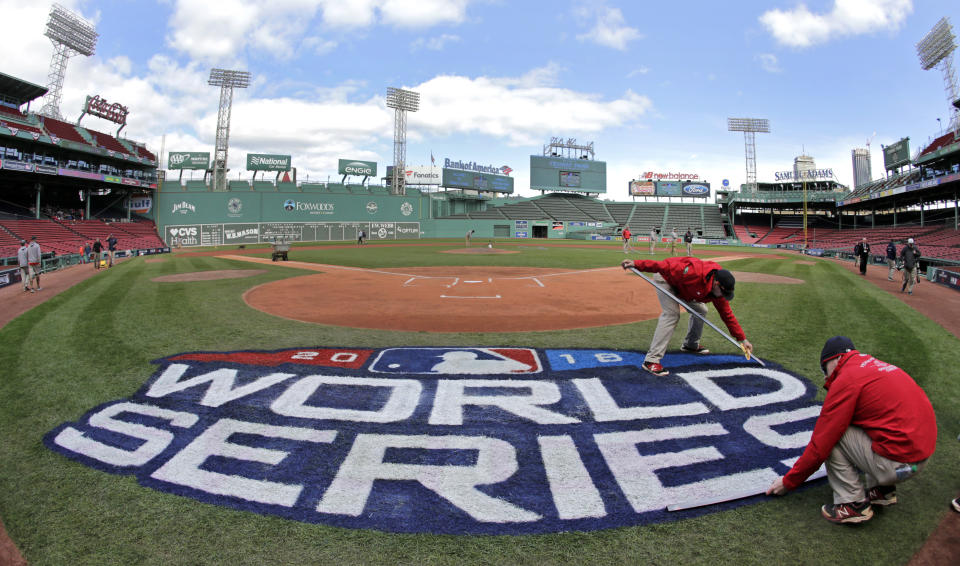MLB revenues continue to hit record highs as payrolls drop

Baseball is a dying sport? Not so much. According to a report by Forbes’ Maury Brown, Major League Baseball took in $10.3 billion in baseball-related revenue in 2018, which was the 16th straight record-setting year.
While this number is certainly encouraging for baseball fans, it’s also a bit strange considering teams cut payroll by a combined $115 million from 2017, the largest drop-off in the game since 2004. This is also the second straight slow offseason despite two of the biggest free agents in baseball’s recent history.
What’s more, the $10.3 billion in revenue does not include the $2.58 billion sale of BAMTech to Disney, which is reported as capital and split among the 30 teams. The league is still making a lot of money despite a 4 percent drop in attendance.
How can it be that the league continues to make money without commensurate raises (or any raise) in payrolls? With the current collective bargaining agreement set to run out on Dec. 1, 2021, there will certainly be plenty to iron out in the coming years.
Spending has fallen compared to revenue
Thanks to reporting from Forbes, MLB payrolls can be easily seen going back to 1999. Payrolls have more than tripled since then with only four years of drops in total player salaries. That is obviously a good thing for the players, although perhaps not as fair as it might seem.
Payroll has actually fallen in recent years compared to baseball-related revenue. With revenues approaching $9 billion in 2014, baseball teams spent around 45 percent of their combined revenue on player salaries. That mark rose above 46 percent for each of the next three seasons, but with the downturn in payroll for 2018 to $4.547 billion, MLB appears to only have spent around 44 percent of its revenue on players. Luxury tax may push the total teams spend on salaries closer to 50 percent, however only a fraction of that money is used on player benefits.
Currently, the NBA determines the salary cap by a percentage of basketball-related income. While players used to get 57 percent of the BRI in the 2005 CBA, they now make 51 percent of the BRI. So while $46 million per year for Anthony Davis may sound outlandish to some, he’s only able to make that much because the NBA is printing money.
MLB is obviously making a lot of money as well, and although players making a certain cut of all baseball-related revenue is not a part of the current CBA, that could be something the players aim for in the next round of negotiations.
Why aren’t teams spending money?
A large reason payrolls went down last season is because two of the biggest-spending teams — the Los Angeles Dodgers and New York Yankees — decided to sit out the free agent market and cut back a combined $89.8 million in salaries.
The teams wanted to cut payroll mainly to get under the luxury tax line. Of course, this is a self-imposed ceiling — a de-facto salary cap with no matching salary floor — since their billionaire owners can certainly afford to shell out more money. But getting under the luxury tax allows for smaller penalties the next time a team surpasses them.
Here’s the thing: the Yankees and Dodgers still haven’t spent money. Bryce Harper and Manny Machado remain unsigned into the new year, and neither team has signed a free agent for more than $40 million, while the Dodgers traded away valuable players to the Reds just to cut salary. Things aren’t so different compared to last offseason, when the three biggest free agent signings didn’t happen until February, days before spring training.
It’s certainly odd that only a handful of teams are interested in Harper and Machado as well, when they fit into every team’s long-term plan. Every team should have interest in 26-year-old superstars. It’s just a matter of spending money, which teams have shown they are less and less interested in doing over the years.
More from Yahoo Sports:
• Wetzel: Fans jeer, teammates console Bears kicker after crushing loss
• The legend of Eagles’ Foles grows bigger
• Flacco’s time in Baltimore appears to be over
• Thamel: How Clemson can derail Alabama’s title hopes
